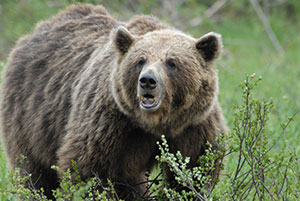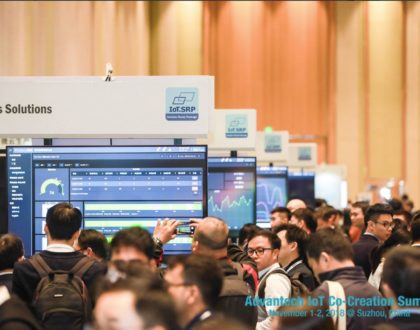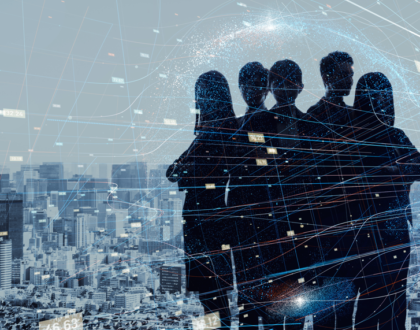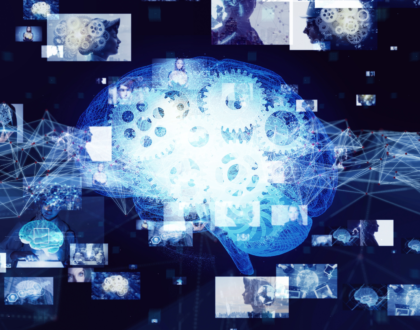It’s Always Time for Breakfast When You’re Time Traveling
by Mike Fahrion
I don’t usually sit down and start writing at 3:45 a.m. on a Monday morning, but I’ve just returned from a trip to Europe. Now my internal clock is confused about which time zone we’re supposed to be in. As a result — having decided that I’d better get up and get moving before they stop serving breakfast in Prague — my internal clock has roused me up and kicked me out of bed in Illinois. So here I sit, bright-eyed and bushy-tailed, and all set to have breakfast on another continent.
In Hawaii it’s still Sunday right now. In 15 minutes, it will already be Tuesday in Samoa. That is, unless you’re 80 miles east in American Samoa, where it’s currently Sunday and they haven’t even started Monday yet. So what the heck. If my internal clock thinks it’s time for breakfast, hey, it’s always time for breakfast somewhere.
For the first day or two, jet lag always makes me feel like I’ve traveled through time as well as space. And in a way, we really do. Just compare the world you’re traveling through today with the one you lived in when you were a kid. It’s not the same place, is it?
One of my first journeys was into the land of fieldbusses, proprietary land-grabs and pseudo standards. Much of it was hidden behind a fog of mystery and marketing, and it was B&B’s mission to clear the air. As we had no allegiance to any particular standard, our customers came to know us as the gurus of connectivity – the experts you could call when you need to reliably connect different devices, different data networking protocols, different brands and different proprietary standards. Whether it was in the plant, the warehouse, the lab or the great outdoors, we made everything talk to everything else. B+B SmartWorx started the journey towards what is nowadays called the Internet of Things before it even had a name.
Fortunately, the fieldbus wars have subsided and we’re currently moving on into a standards-based world of IP connectivity that is enabling incredible innovation. Consumer toys get all the press, but the real story of the Internet of Things will be M2M connectivity. We’ll be expanding network topologies and capabilities with new devices and new technologies, and we’ll need to keep our existing equipment and infrastructure connected and communicating as well. Immediate goals will include eliminating unplanned device downtime for devices both old and new, and optimizing asset performance.
But there’s a larger, even more important story. The consequences of some critical macro trends are lying in wait for us right down the road, and the Internet of Things will help us address them.
Natural Resources
Population growth and rising living standards are placing increasing pressure on all of our natural resources. Improved extraction techniques can increase short term supply, but they can’t increase the total quantity of a finite resource. We’ll need to find ways to make more efficient use of everything from natural gas to irrigation water.
The draining of the Ogallala Aquifer under the North American Great Plains is a useful example. The aquifer provides 30 percent of the irrigation water used in the United States, along with drinking water for nearly 2 million people in eight Great Plains states. The water level in the aquifer is steadily dropping, and at current usage rates it may only last for another 25 years. It would take Nature 100,000 years to replace it.
No single solution will solve the problem, but there’s already one Internet of Things technology that can make a big difference. It’s estimated that as much as 50 percent of irrigation water is wasted due to evaporation or runoff. So in Europe, they’re testing a prototype of the new “WaterBee” smart irrigation system. Rather than relying on timers, like older irrigation systems, WaterBee uses a network of wireless sensors to monitor soil conditions in real time. It analyzes the data to determine where and when water is actually needed, and releases it accordingly. The 14 WaterBee test sites have already reduced water usage by an average of 40 percent. That’s a big step in the right direction.
Climate Change
 Finland Brown BearIt has become increasingly absurd to deny that we’re experiencing global climate change. It’s happening before our eyes. For example, the same changes in the Artic jet stream that brought brutal winters to the United States this winter made Scandinavia warmer. In Finland the bears came out of hibernation. In Norway, daffodils and crocuses popped up in the middle of December.
Finland Brown BearIt has become increasingly absurd to deny that we’re experiencing global climate change. It’s happening before our eyes. For example, the same changes in the Artic jet stream that brought brutal winters to the United States this winter made Scandinavia warmer. In Finland the bears came out of hibernation. In Norway, daffodils and crocuses popped up in the middle of December.
Media hyperbole and irrational notions aside, science says that the major culprit appears to be carbon dioxide. We need to release less of it into the atmosphere, and shutting down the world economy isn’t an option. Internet of Things technologies will help by letting us use energy far more efficiently, thus cutting emissions. But they’ll help us approach the carbon problem in other ways, too.
The new Ivanpah Solar Electric Generating System on the California-Nevada border is capable of producing nearly 400 megawatts of electricity, and it generates no carbon dioxide. That’s good news. Unfortunately, the system only works if its hundreds of thousands of reflecting mirrors are continually positioned to aim their light at a single focal point. And the earth rotates. A mirror that was positioned correctly at 9:00 a.m. would not be positioned correctly at noon. Not so long ago, there would have been no practical way to keep all of those mirrors in precise alignment. But on the Internet of Things, managing huge numbers of remote devices will be routine. We’ve already started doing it.
Population
It’s estimated that there were about 60 million human beings on the planet when the Egyptians built their pyramids. 2500 years later — in the days of Caesar and Cleopatra — the population had risen to about 230 million. It took almost two more millennia to reach the 1 billion mark. That happened somewhere around 1820, and it had required most of human history to get there.
Then things took off. In 1920 there were 2 billion people. By 1974 that had doubled to 4 billion. World population is currently over 7 billion. We’ve been having a lot of babies.
Note that every time the population doubles we’d theoretically need twice as many transportation systems, twice as many farms –pretty much twice as much of everything. That’s just so that things can stay the same, much less get better.
But you can achieve the same effect if you make existing systems twice as efficient. By extending intelligence to the edge of our networks, collecting and analyzing unprecedented quantities of real time data, and making intelligent decisions, Internet of Things technologies will vastly increase efficiency in virtually everything we do. And when you increase efficiency in a system, you’ve effectively increased its capacity.
Aging
Thankfully, most of the research indicates that population growth is starting to slow down. But at the same time, people are living longer. Over time, a steadily increasing percentage of world population will be made up of the elderly. This will obviously have profound social and economic impacts.
Again, Internet of Things technology will help us keep up. In the United States alone, it’s estimated that $100 billion in health costs are the result of poor medication adherence. People fail to take their meds on time, or they forget to take them at all. So early versions of the “smart” medication bottle are already appearing on the market. A smart medication bottle can compare prescriptions to actual usage and alert the appropriate human if a scheduled medication has been forgotten. Future intelligent remote devices will let users monitor and test many aspects of their own health without leaving home, and they’ll be able to upload the data to be analyzed in the cloud. Internet of Things technology may not be able to talk you out of overeating or into joining a gym, but it is poised to make health care incredibly more efficient. We’ll need that efficiency as the elderly population and their associated health care needs continue to grow.
As we continue our trip through time, the deployment of Internet of Things technologies will become an increasingly vital necessity. We’ve got some very big problems that will have to be solved if we hope to keep moving forward.
If you’re an OEM, a system integrator or a service provider , you’re undoubtedly considering how you’ll leverage your expertise, your knowledge of customer needs, and Internet of Things technology to create business opportunities. If you stop to consider some of the macro trends that I’ve mentioned, and the associated problems that are going to have to solved whether we like it or not, it’s likely that you’ll spot some business opportunities as well.
B+B’s role in this journey is clear. We’ve always been about connecting devices and assets, and extending the range and the reach of the network. Now we’re developing products and expertise that will provide a complete and intelligent connectivity stack. We’ll take your data all the way from edge devices and assets to the cloud and to your application, wherever it may be. We’ll enable you to create solutions for your customers– and some of your solutions will surely improve our world.
If you’re interested in Internet of Things technologies, let’s talk. But not right this minute. Like you, I’m excited about our journey into the future. But I’ve just returned from a rather smaller trip, and what I really need right now is some bacon and eggs. Then I’m going to see if I can go back to bed.
P.S. Developing all of these products takes a lot of work and a lot of software. If you’re an embedded software developer, and you’re interested in being part of B+B’s journey to connected intelligence, drop me a note. We’re looking for more great engineers to add to our team.
Recommended Posts

Co-Creation, Paving the Way to a More Connected Future
November 27, 2018

The Benefits of a ‘Do It For Me’ Mentality in the IIoT
October 5, 2018

Why You Need to ‘Mind the Gap’ in Manufacturing Technology
August 31, 2018
